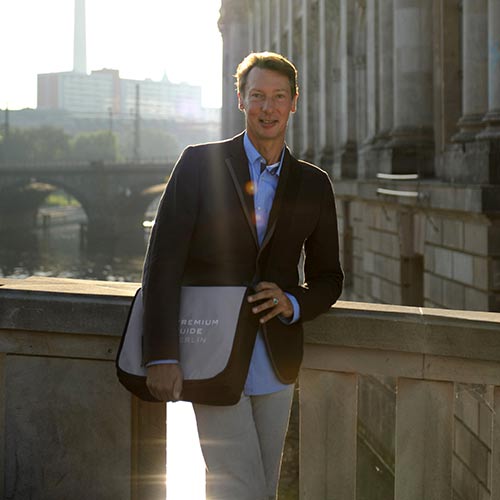Sanssouci Palace
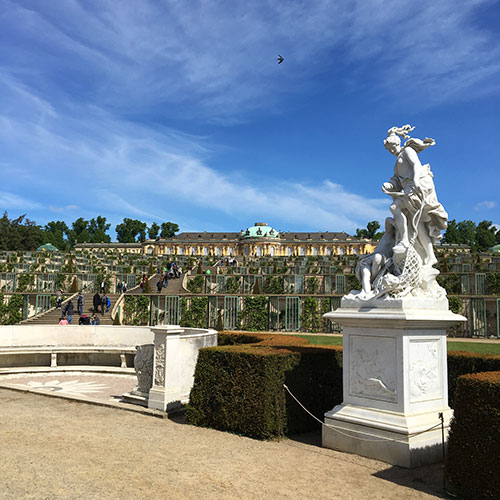
Sanssouci palace is only one of the 30 sites administered by the Foundation of Prussian Palaces and Gardens (SPSG). It was the summer residence of the most important Prussian king, Frederick the Great, who started planning it shortly after taking the throne in 1740. The architect Georg Wenzeslaus von Knobelsdorff (see also Berlin Opera) realized the mansion-like palace (with only twelve rooms) in a distinct rococo style. The king spent much time at his beloved “little vineyard house”, how he called it, where he could enjoy privacy and follow his manifold interests. He died there on August 17, 1786, and, according to his wishes, was buried – although belated – on the garden's upper terrace, next to the palace.
The gardens of Sanssouci cover an area of about 290 ha (over 700 acres) of which a smaller part is a formal garden in baroque design. The larger part was designed by Peter Joseph Lenné in the 19 th century in the fashion of a natural landscape. Lenné created lines of view to create connections between the various buildings in the park, most of which can be visited today (although some only on weekends): The New Chambers, the Chinese Tea Pavilion (photo below), the New Palace with the Pesne-Gallery (200 rooms), the Picture Gallery (works of Van Dyck, Caravaggio, Rubens), Charlottenhof Palace (by Karl Friedrich Schinkel), the Roman Baths, the Orangery Palace and the Church of Peace.
Potsdam Guide
Opening hours :
• From Tuesday to Sunday 10h-5:30pm (01.11-31.03: 16h30)
Tips :
• In high season buy your tickets right at 10 a.m.
• Or buy in advance on the SPSG-website
• You must be at the entrance at the fixed ticket time
• From the main train station, bus lines 695 and X15 go directly to Sanssouci. At the station you will be guided by graphic signs.
• If you already have tickets: Walk through the baroque city and the park, but take enough time (min. 30 minutes from Luisenplatz).
Ticket prices :
• On site : 12 € for Sanssouci / 19 € for all castles
• Online : 21 € for all castles
Web: www.spsg.de
Cecilienhof Palace
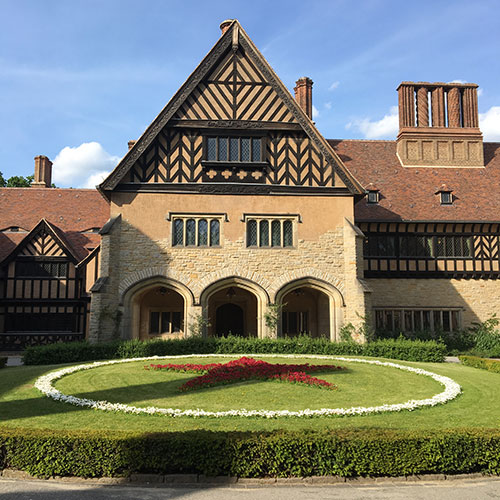
The origin of the New Garden dates back to the nephew and successor of Frederick the Great, Frederick William II. From 1787, an “English” landscape garden was laid out on the banks of Heiliger See (sacred lake), followed by the construction of the Marble Palace. Almost within eyeshot, Cecilienhof palace was built more than a century later – in the style of a Tudor manor house. Commissioned by Emperor William II. and only finished during World War I, Cecilienhof was to be the last palace of the Hohenzollern family – a residence for the crown prince. The timber-framed house that owes its name to Crown Prince William's wife, Cecilie, has no less than 176 rooms.
Thus, it was well suited for the Potsdam conference, held at Cecilienhof after the end of World War II. Accompanied by their delegations, the allies' heads of state met there from July 17 to August 3, 1945 to discuss the future of Germany and Europe. Joseph Stalin represented the Soviet Union, Harry Truman the United States and Winston Churchill (replaced by Clement Attlee halfway through the conference) the United Kingdom. After 13 sessions, on July 26, 1945, the Big Three issued the Potsdam declaration that set the conditions for Japan's surrender.
You can also visit the Marble Palace, romantically situated on a terrace directly on the lakeshore in the New Garden. In 1787-93 King Friedrich Wilhelm II had this building with its external Silesian marble accents erected.
Potsdam Guide
Opening hours :
• From Tuesday to Sunday 10h-5:30pm (01.11-31.03: 16h30)
Tips :
• Bus line 603 to Cecilienhof departs from "Platz der Einheit" behind Nikolai Church. You can walk there and cross the park at the heiliger See
Ticket prices :
• 8 € for the historical rooms of the Potsdam Conference
• 10 € with the Marble Palace - www.spsg.de
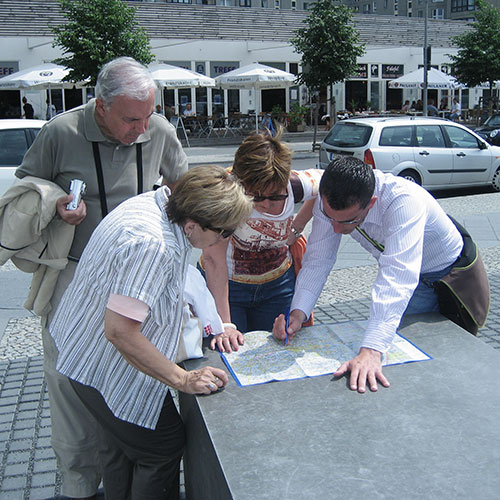 Guided tour in Potsdam:
Guided tour in Potsdam:
Spend a guided day with Jean-Pierre Andreae, your personal guide. By public transport if you are with your family or by private bus for large groups.
Information and booking
Nikolaikirche and Old Town Hall
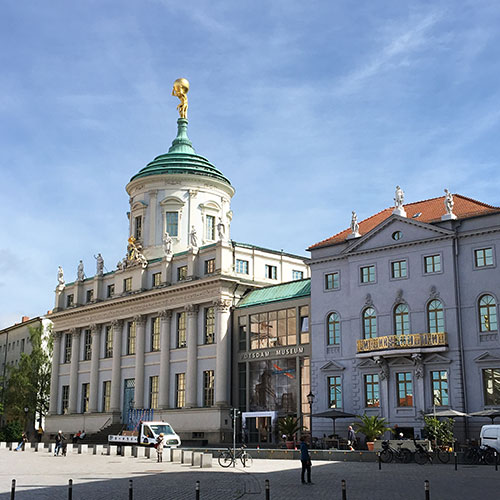
After the arrival at Potsdam's main station, you cross the bridge that spans over river Havel and the Island of Friendship (with its gardens created by the famous gardener Karl Foerster and renewed for the Federal Garden Exhibition in 2001). The next thing you see are the domes of the old town hall and Nikolaikirche, Potsdam's largest church, built by Schinkel in 1837. On top of the town hall building, a guided atlas and other figures (known as “dolls”) can be seen. The obelisk in front of the church is 20 meters tall. Originally, it was erected in honor of the four important rulers of the Baroque era. But when is was restored in GDR times, the design was modified. So, since 1979 it is dedicated to the four architects that helped shape Potsdam's extraordinary artistic heritage (Schinkel, Gontard, Knobelsdorff and Persius).
This is also the site of the former Potsdam city palace. After being severely damaged in the war, its shell was demolished in 1959. Now, it has been definitely decided that the palace be rebuilt, mostly true to original, until 2013. The first step was already done, with the reconstruction of the Fortuna gate, in 2002. Meanwhile, the foundations of the palace have been excavated and the site is prepared. The new palace will house the parliament of the Federal Land of Brandenburg.
The “orangery” opposite the palace grounds, which served as the Royal Stables for most of the time, today is the Potsdam Filmmuseum (see “Museums” page).
Colony Alexandrowka
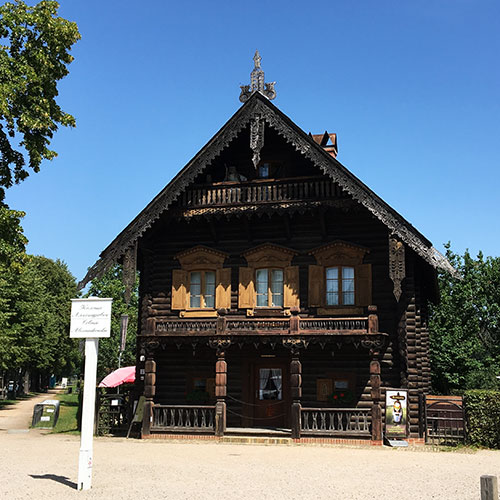
The history of the Russian colony really started in 1812, when Prussian troops took hold of about 500 Russian soldiers. A choir was formed among the prisoners. The Prussian king, who liked Tsar Alexander I, soon afterwards changed allegiance and joined the tsar in the war against Napoleon. Still, the imprisoned soldiers stayed in Prussia, as the tsar made them a gift to the king. Frederick William, a lover of melancholic Russian folk tunes, wanted that the choristers felt at home in Prussia, thus, he built Alexandrowka. The Russian colony comprises 14 houses, each with a garden and orchard.
To make them resemble Russian huts, the houses are clad with wooden beams and adorned with jigsaw ornaments. Today, the charming colony has a little museum and a café/restaurant.
Potsdam Guide
To visit :
• Museum Alexandrowka - April-October Thursday-Tuesday from 10am to 6pm - 3,50 € p.p.
• Restaurant Alexandrowka
- Tuesday-Sunday From 12am to 9pm
Tips :
• To stay with this theme, climb the Pfingstberg and visit the Orthodox Nevsky Chapel of Karl Friedrich Schinkel. From Sanssouci follow the road (10 minutes) "Voltaireweg" to the Colony.
Glienicker bridge
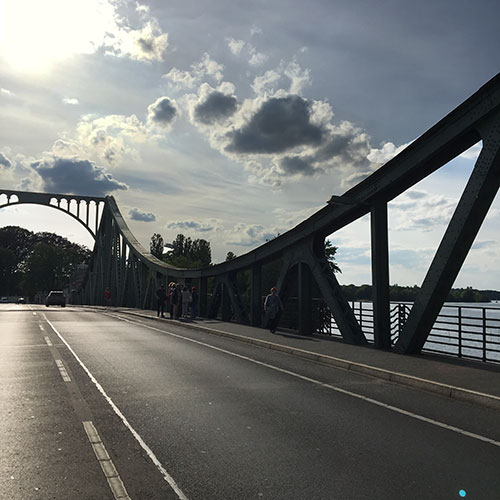
This bridge marks the boundary between Potsdam and Berlin which, for four decades, also was the state border between the GDR and West-Berlin – and thus, a part of the Iron Curtain. Following the construction of the Berlin Wall on August 13, 1961, the border installations were continuously amplified and improved, mutilating the beautiful landscape. Glienicke bridge became famous as a focal point of the Cold War, when prisoners were exchanged here on several occasions. In Februaryy 1961, the American pilot Francis Gary Powers (whose U 2 had be shot down over Soviet territory) was swapped for master spy Rudof Abel. On June 11, 1985, 23 western agents were exchanged for three KGB and one Polish agent. The following year saw Soviet dissident Natan Sharansky be liberated on the bridge thanks to another prisoner exchange. Finally, on November 10, 1989, the border crossing was opened and everybody could cross over the bridge again.
Potsdam Guide
To visit :
• Glienicke Palace - Opening hours : www.spsg.de
• Kaiserliche Matrosenstation - New "Norwegian" Café/Restaurant near Cecilienhof - www.matrosenstation.de
Tips :
• Visit the Palace of Cecilienhof and walk along the riverside to the spy bridge (25 minutes), then return by bus 316 to Wannsee ( bus station on the Berlin side of the bridge) and take the S-Bahn S1 to Berlin.
Belvedere on the Pfingstberg
-SPSG,-FVP-Foto-Leo-Seidel.jpg)
The Belvedere was built between 1849 and 1869 by Ludwig Ferdinand Hesse, modeled on the Villa Medici in Rome. Its two towers are 25 meters tall and offer a magnificent view of Potsdam and its surroundings, as the Belvedere sits on the highest hilltop around. The Pfingstberg (Pentecost hill) had already been embellished by garden designer Peter Joseph Lenné in 1830. Part of Belvedere is also a water basin that feeds the fountains of Neuer Garten.
In 1800, when the area was still covered with vineyards, the architect Karl Friedrich Schinkel who was eminently important for Prussia created his debut piece on the hillside – a small pavilion resembling a temple (Pomonatempel).
Descending in direction of the Russian colony, one passes by the Russian-Orthodox St. Alexander Nevsky chapel, which was also erected by Schinkel, although the St. Petersburg architect Vasily Petrovich Stasov had provided the plans. The many icons, which are found inside the church, were gifts from Charlotte of Prussia, the eldest daughter of Frederick William III., who became Alexandra Feodorovna when she married the Tsar Nicholas I. Foto: © SPSG / Leo Seidel
Potsdam Guide
To visit :
• Belvédère - Opening hours : www.spsg.de - 4,50 € p.p. -
• Russian-Orthodox Newksi-Kapelle - The doors of the church are often open - www.r-o-k.de
• Former KGB prison - From Tuesday to Sunday from 2pm to 6pm - Free admission - www.kgb-gefaengnis.de
• Restaurant/ Terrasse on Pfingsberg - Große Weinmeisterstrasse 43b, 14469 Potsdam (Closed on Tuesday) - restaurant-pfingstberg.de
Tips :
• The ideal route for your day in Potsdam (on foot): Main Station - Old Market - Old Town and Dutch Quarter - Brandenburg Gate - Park and Sanssouci Palace (buy ticket online for 3pm) - Then Russian Colony - Pfingstberg - Cecilienhof Palace - Glieniecker Bridge - Then return by bus (line 316 from the bridge)/S-Bahn (S7) to Berlin.
Old Town & Brandenburg Gate
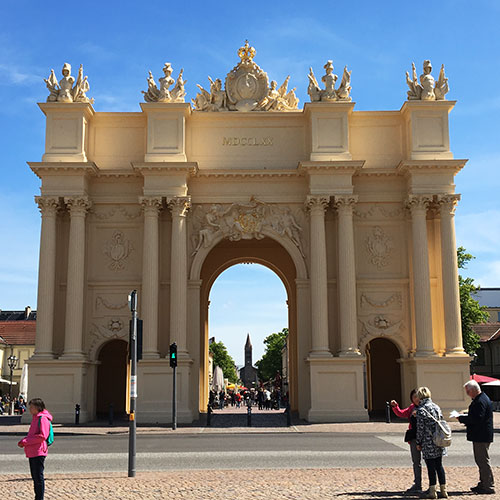
The old town of Potsdam is composed of several well-defined quarters. The main axis of the second Baroque extension, once defined by a town wall, is Brandenburger Straße, which ends at the ostentatious Brandenburg gate. Two other gates of that enclosure still exist, Jägertor (hunters' gate, the oldest) and Nauener Tor, built by Büring in 1754 based on a sketch by Frederick the Great. Nauen gate actually is considered to have been the first Neo-Gothic structure on the European continent. The Dutch quarter lies to the right. Following Friedrich-Ebert-Straße right through the gate, the Russian colony in just ten minutes away.
Potsdam Guide
Museums / Culture :
• Potsdam Tourism: You are at the main station and at the old market place
• Former STASI Prison - Tuesday-Sunday 10am-6pm - Lindenstraße 54, 14467 Potsdam
Tips :
Via the Brandenburg Gate you reach Luisenplatz and then enter the Sanssouci Park. First you visit the Friedenskirche with its mosaic from the 13th century (saved from the church San Cipriano in Murano).
The Dutch Quarter
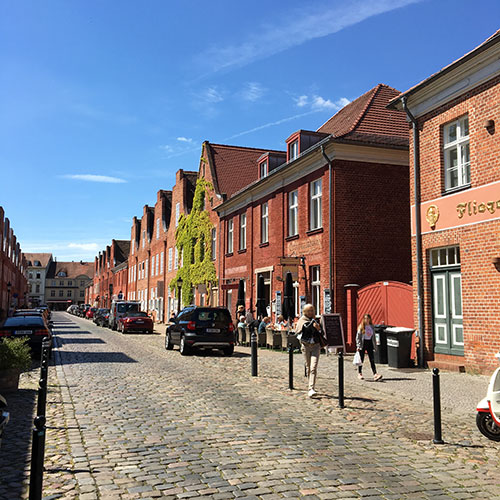
With its 134 houses the Dutch quarter of Potsdam is the largest complex of its kind outside the Netherlands. It goes back to the 18 th century, when the Soldier-King decided to extend the city to better suit the needs of his precious army. He thought of building Dutch houses as an appropriate measure in order to attract Dutch craftsmen, whose skills he admired. Finally, most of the quarter's inhabitants were immigrants, but far more French, Swiss or Italians than Dutch. Today, the picturesque rows of houses are dotted with cafés, arts & crafts and antiques stores.
St. Peter and Paul Church
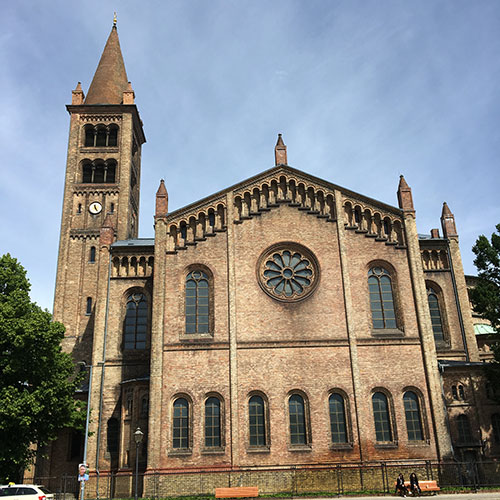
It is a bit surprising to see an impressive Catholic church right in the middle of what used to be a strictly protestant city. In fact, the history of Potsdam's Catholic minority also started during the reign of the Soldier-King, who was a pious man. Still, he desperately needed experts for the Potsdam rifle factory and therefore invited colonists from Luick (Liège) – a city renowned for its armory. The settlers agreed to come, but with the condition of being granted a place of prayer. The actual church dates from 1867 and holds three paintings by Antoine Pesne.
Potsdam Guide
Opening hours :
• +/- Monday-Friday 12am-5pm Saturday from 10am Sunday afternoon
www.peter-paul-kirche.de
Tips :
• Visit also the Soviet cemetery and the French church by Knobelsdorff constructed with an interior by Schinkel. Opening hours varied. They also have a weekly market.
Babelsberg Palace
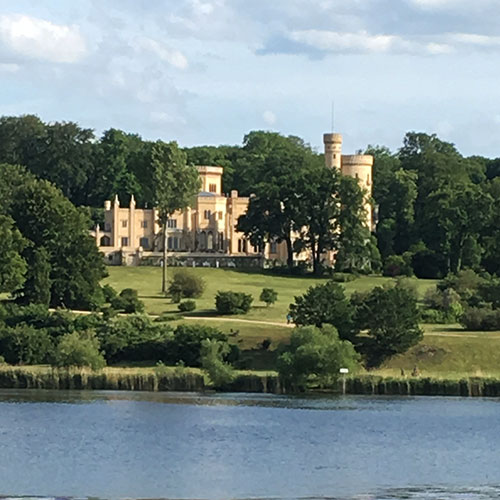
Erected by Karl Friedrich Schinkel in 1834 for Prince William (later King and Emperor William I.) and his wife Augusta of Saxe-Weimar, in Gothic Revival style, this palace is a bit reminiscent of a Scottish castle. Despite ongoing restoration works, the interior can be visited during the summer season. The park alone is well worth a visit and offers splendid views of the river Havel and Glienicke bridge.
Potsdam Guide
Opening hours :
• 2019 : Closed for renovation
Tips :
• To get to the palace, take bus 694 from Potsdam main station to Babelsberg town hall (Rathaus) and then bus 616 to Babelsberg Palace. From Berlin take an ABC day ticket including Potsdam.
www.spsg.de


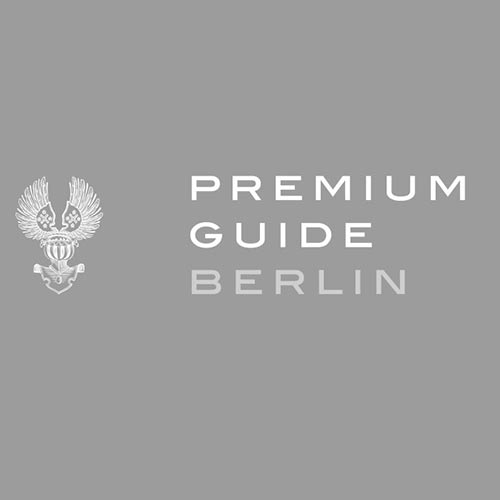
-SPSG,-FVP-Foto-Leo-Seidel.jpg)
